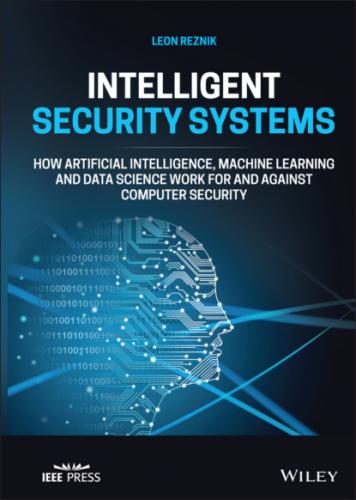NIST Special Publication 800‐150 Guide to Cyber Threat Information Sharing, October 2016, available at https://nvlpubs.nist.gov/nistpubs/SpecialPublications/NIST.SP.800‐150.pdf
NISTIR 8053 De‐Identification of Personal Information, October 2015, available at https://nvlpubs.nist.gov/nistpubs/ir/2015/NIST.IR.8053.pdf
NISTIR 8170 Approaches for Federal Agencies to Use the Cybersecurity Framework
NIST, March 2020, available at https://doi.org/10.6028/NIST.IR.8170
NISTIR 8269 (DRAFT) A taxonomy and terminology of adversarial machine learning, May 2019, available at https://nvlpubs.nist.gov/nistpubs/ir/2019/NIST.IR.8269‐draft.pdf
I.7 Data and Information Sources Used
I.7.1 Glossaries in the Area of Cybersecurity
1 National Institute of Standards and Technology (NIST) provides a keyword searchable glossary of more than 6700 security‐related terms with references to a particular NIST publication. This Glossary consists of terms and definitions extracted verbatim from NIST's cybersecurity‐ and privacy‐related Federal Information Processing Standards (FIPS), NIST Special Publications (SPs), and NIST Internal/Interagency Reports (IRs), as well as from Committee on National Security Systems (CNSS) Instruction CNSSI‐4009 – see https://csrc.nist.gov/glossary/
2 The National Initiative for Cybersecurity Careers and Studies of the Department of Homeland Security Portal provides cybersecurity lexicon to serve the cybersecurity communities of practice and interest for both the public and private sectors. It complements other lexicons such as the NISTIR 7298 Glossary of Key Information Security Terms. Objectives for lexicon are to enable clearer communication and common understanding of cybersecurity terms, through use of plain English and annotations on the definitions. The lexicon will evolve through ongoing feedback from end users and stakeholders – see https://niccs.cisa.gov/about‐niccs/cybersecurity‐glossary#
3 SANS Institute glossary of terms – see https://www.sans.org/security‐resources/glossary‐of‐terms/
4 Canadian Centre for Cyber Security’s glossary – see https://cyber.gc.ca/en/glossary
I.7.2 Glossaries in the Area of Artificial Intelligence
1 Council of Europe, Artificial Intelligence Glossary – see https://www.coe.int/en/web/artificial‐intelligence/glossary
2 Wikipedia, Glossary of Artificial Intelligence – see https://en.wikipedia.org/wiki/Glossary_of_artificial_intelligence
I.7.3 Other Data and Information Sources Used
I.7.3.1 Antimalware Tools List and Comparison
Wikipedia https://en.wikipedia.org/wiki/Comparison_of_antivirus_software
Anti‐malware Reviews at http://www.antimalwarereviews.com,
Common Vulnerabilities and Exposures (CVE)® is a list of records – each containing an identification number, a description, and at least one public reference – for publicly known cybersecurity vulnerabilities – https://cve.mitre.org and CVE Details (https://www.cvedetails.com)
Comparison of computer viruses, Wikipedia, accessed at https://en.wikipedia.org/wiki/Comparison_of_computer_viruses – contains a unified list (currently a few dozen virus families) of computer viruses with their origin, isolation dates, and short descriptions
Computer worms, Wikipedia, accessed at https://en.wikipedia.org/wiki/List_of_computer_worms – contains a unified list (currently a few dozen) of computer worms with their origin, isolation dates, and short descriptions
Clam antivirus signature database, www.clamav.net.
Kaggle is the world's largest data science community with powerful tools and resources to help you achieve your data science goals. Their website provides a transparent repository for public datasets – https://www.kaggle.com/datasets
Spam datasets: LingSpam (csmining.org/index.php/ling‐spam‐datasets.html) and SpamAssasin (http://spamassassin.org/publiccorpus).
Конец ознакомительного фрагмента.
Текст предоставлен ООО «ЛитРес».
Прочитайте эту книгу целиком, купив полную легальную версию на ЛитРес.
Безопасно оплатить книгу можно банковской картой Visa, MasterCard, Maestro, со счета мобильного телефона, с платежного терминала, в салоне МТС или Связной, через PayPal, WebMoney, Яндекс.Деньги, QIWI Кошелек, бонусными картами или другим удобным Вам способом.
